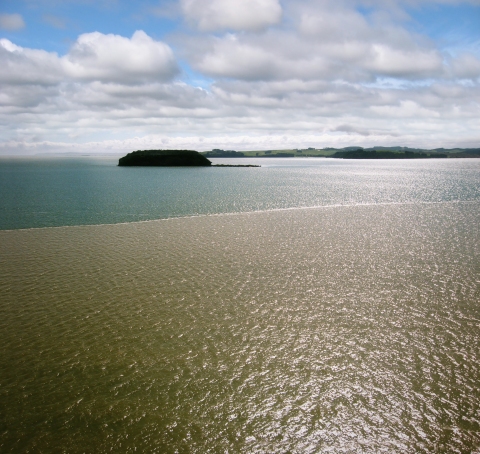Summary:
Students set up working models of fresh water meeting salty water in an estuary
Keywords:
Density, stratification, properties of water, nutrient supply in aquatic systems, aquatic life, salt wedge
Introduction:
Bodies of water form layers based on differences in density, usually affected most by temperature and salinity. As fresh water from rivers enters an estuary it mixes with saltwater from the sea. What happens to the two different densities of water when they meet? Water will become more dense as its salinity increases. Will denser water float or sink?

Materials:
- two water samples: one fresh water and one salty water
- food colouring (two colours)
- three 600 ml beakers
- straw
Procedure:
- Prepare two water samples: one is fresh water and one is salty water. Put 3 drops of different food colouring in each sample.
- Pour some salty water into the third beaker. Carefully tilt this beaker of salty water and use the straw as a pipette to run some fresh water down the inside of the saltwater beaker. What happens?
- Once distinct water layers have formed in the beaker, blow across the surface of the water.
- Describe the process of mixing you observe and relate it to the formation of salt wedges which occur in estuaries.
Evaluation:
Describe your observations using diagrams and written reports. Include any related personal experiences such as swimming in an estuary: was there a difference in saltiness of the water? What happens to fresh water when it flows into the estuary? How do animals that live in either saltwater or fresh water survive in this environment.
Resource prepared by Bernard Potter RSNZ Teacher Fellow 2001, NIWA
